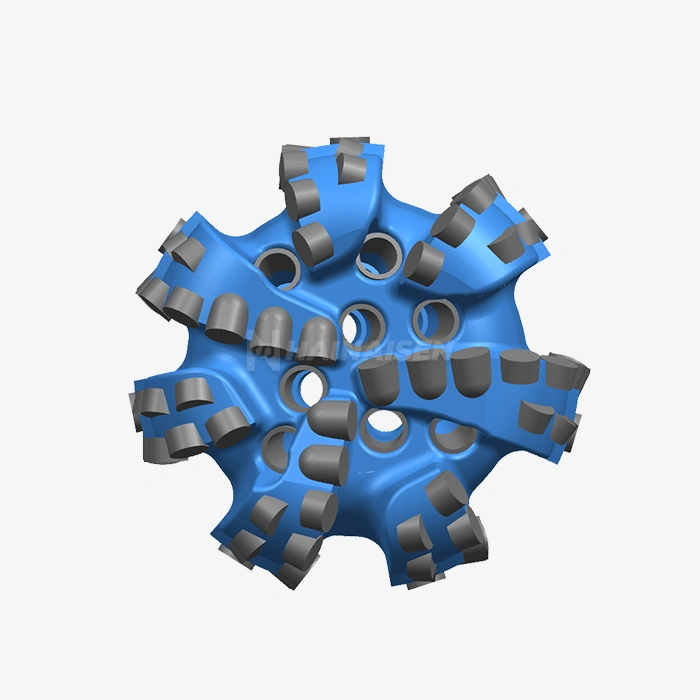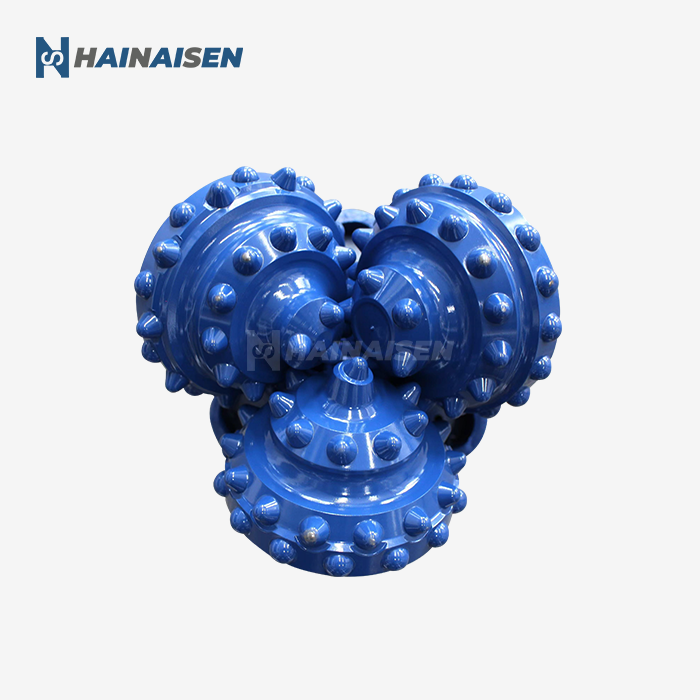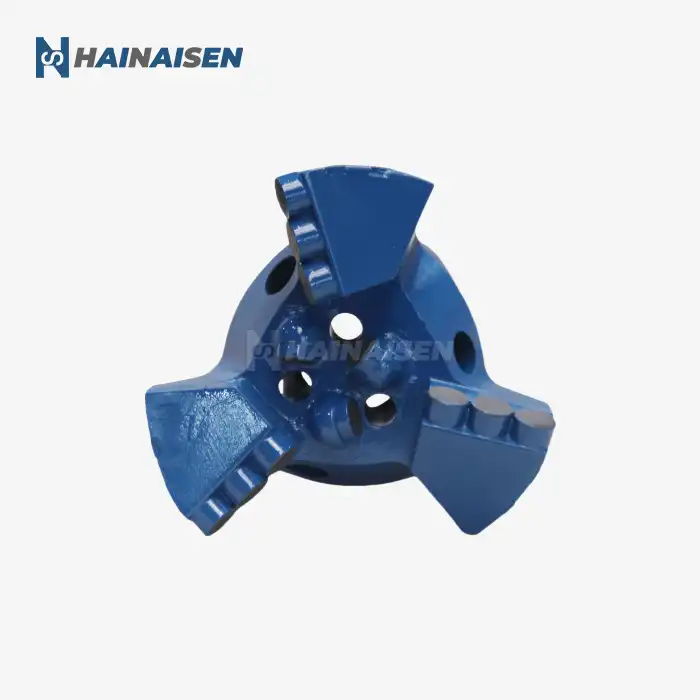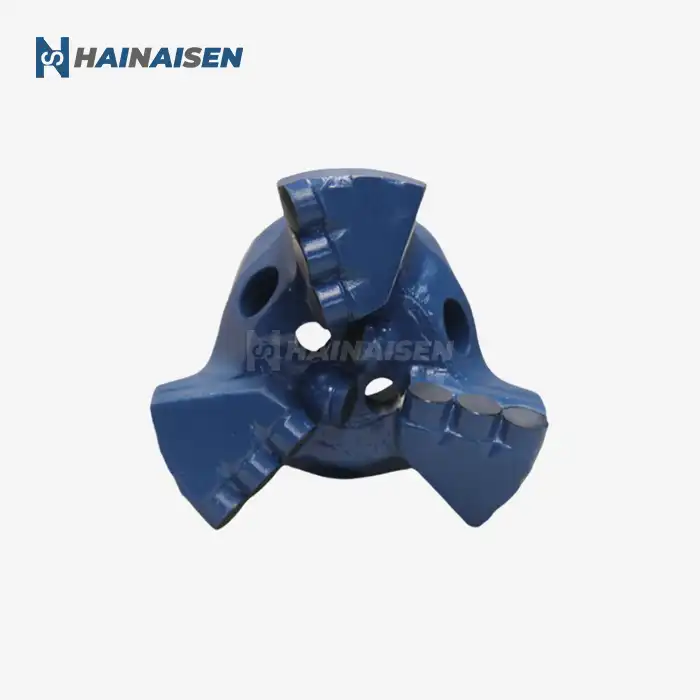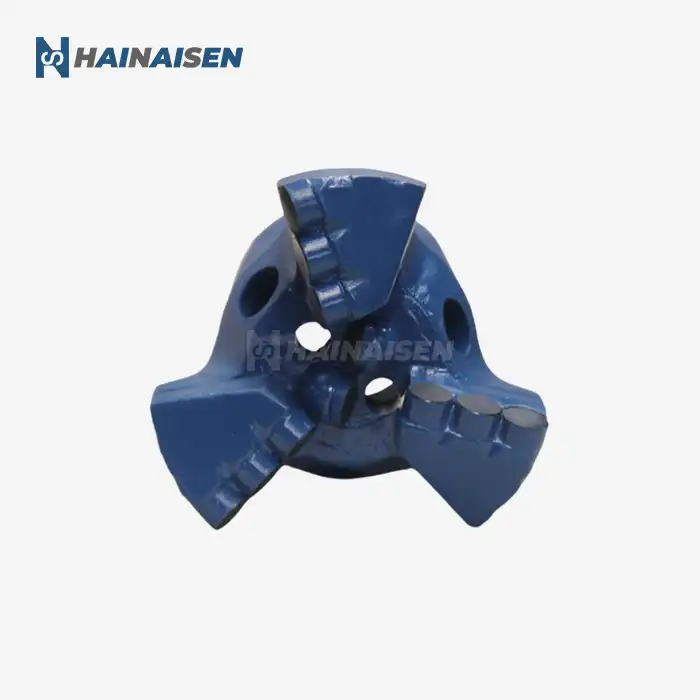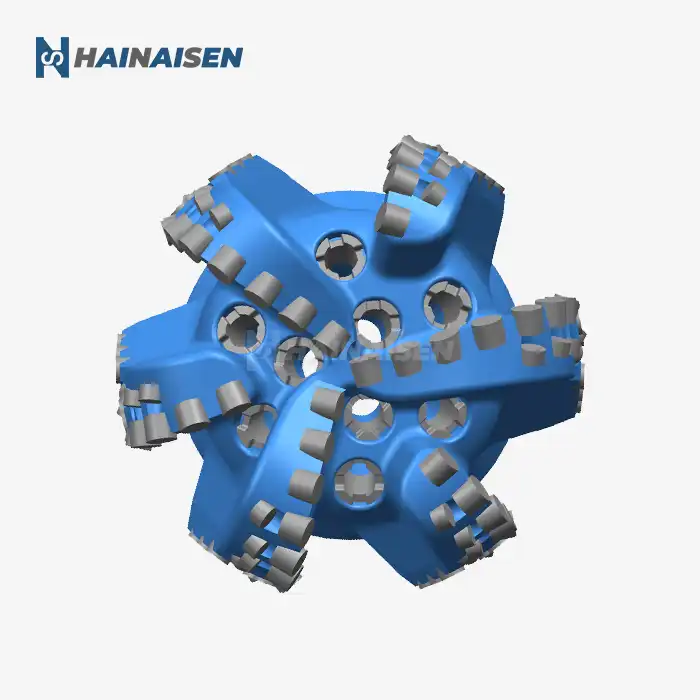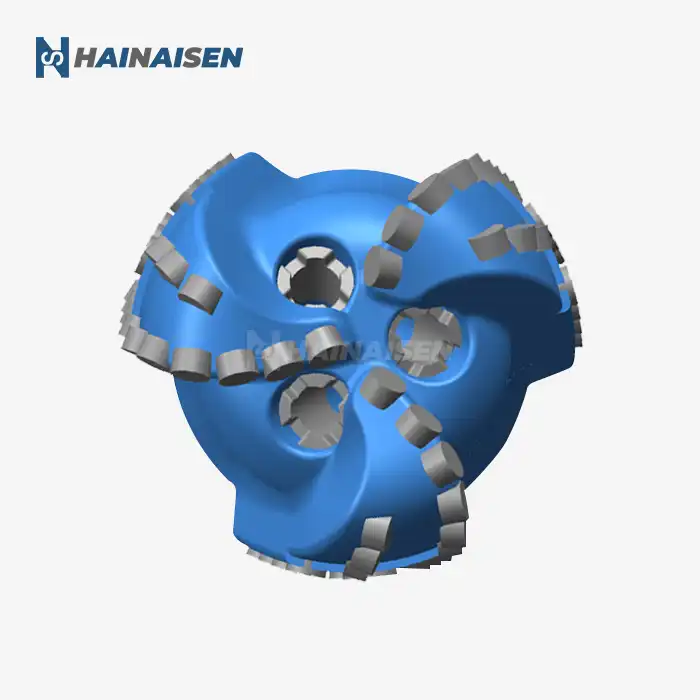The PDC Bit Technology's Scientific Basis
A interesting mix of materials engineering and tribology is used to make Polycrystalline Diamond Compact (PDC) bit technology work. The basic idea behind PDC technology is based on the special qualities of synthetic diamond, which is made under conditions of high pressure and high temperature that are similar to how real diamonds form.
Diamond Synthesis and Cutter Formation
The journey starts with making diamond particles, which are usually between 2 and 50 microns across. Then, under very high pressure and heat, these pieces are sintered together with a metal catalyst that is usually cobalt. This process makes a polycrystalline structure in which diamond grains are bound together. This makes a material that is both harder than diamond and tougher than diamond.
The resulting Api Polycrystalline Diamond Drill Bit PDC cutter is a disc-shaped element with a layer of polycrystalline diamond bonded to a tungsten carbide substrate. This composite structure is crucial, as it provides both the cutting edge hardness of diamond and the impact resistance of carbide.
Cutting Mechanism and Wear Resistance
When applied to hard rock drilling, PDC cutters operate on a fundamentally different principle compared to traditional roller cone bits. Instead of crushing the rock, PDC cutters employ a shearing action. As the bit rotates, the diamond edge of the cutter slices into the rock formation, removing material more efficiently and with less energy expenditure.
Diamond is the hardest natural material known to science, which is why Api Polycrystalline Diamond Drill Bit PDC cuts don't wear down easily. They are different, though, because they have a polycrystalline structure. In contrast to single crystal diamonds, which can break along certain lines, the random arrangement of diamond grains in PDC cutters stops cracks from spreading, making them much more durable in harsh drilling environments.
Thermal Stability and Heat Dissipation
One of the challenges in hard rock drilling is managing the intense heat generated at the cutting interface. PDC technology addresses this through careful material selection and design. As a heat sink, the tungsten carbide base moves heat away from the cutting edge very well. In addition, more advanced PDC mixtures contain thermally stable polycrystalline (TSP) diamond, which stays strong at higher temperatures. This makes the bit even more useful in tough circumstances.
The scientific basis for this leads to real gains for drilling operations. Because PDC cutters are more resistant to wear, they have fewer bit trips, which means less time spent not working. Higher rates of penetration are possible because the cutting process works well, especially in hard formations where regular bits have trouble. Also, being able to keep the cutting edge better over time means that the bit will always work well throughout its lifetime.
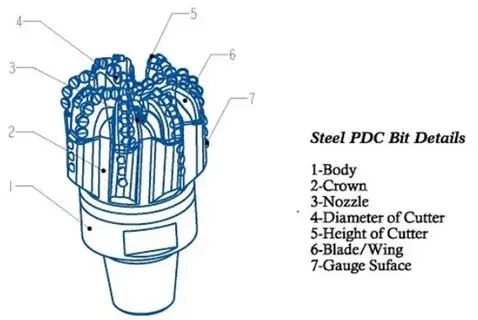
Cost-Efficiency: PDC vs. Traditional Drill Bits
When drilling, especially in hard rock formations, the drill bit you choose can have a big effect on how much the whole job costs. Even though API Polycrystalline Diamond Drill Bits are more expensive at first, they save you a lot of money in the long run. To figure out which is more cost-effective, let's look at PDC bits and regular drill bits side by side.
Initial Investment vs. Long-Term Savings
At first glance, the higher upfront cost of PDC bits might seem prohibitive. However, this initial investment is quickly offset by their superior performance and longevity. Traditional bits, such as roller cone or tricone bits, may have a lower purchase price but often require more frequent replacements, especially in hard rock environments.
Because they have more modern polycrystalline diamond cutters, PDC bits last a lot longer. Because it lasts longer, the bit trips less often, there is less downtime, and the total cost of drilling is less. A PDC bit can often last longer than several traditional bits, which saves money over the course of a drilling job.
Operational Efficiency and Time Savings
Time is money in drilling operations, and this is where PDC bits truly shine. Their ability to maintain high rates of penetration (ROP) in hard rock formations means faster drilling progress. Traditional bits often struggle in these conditions, leading to slower drilling rates and increased project duration.
Drilling activities can be planned more accurately because Api Polycrystalline Diamond Drill Bit PDC bits always work the same way. This predictability makes it easier to plan and allocate resources, which improves the total efficiency of the project even more. Cut down on the time wasted on bit changes and trips, which can save a lot of money. This is especially true for deep drilling, where each trip can take a long time and cost a lot of money.
Energy Efficiency and Fuel Savings
Energy use is another part of cost-efficiency that is often forgotten. PDC bits are better at drilling through hard rock than standard bits because they shear the rock instead of crushing it. This lower demand for energy means that the drilling rig will use less fuel, which will save money and be better for the environment.
Because PDC bits cut better, they also cause less damage to other drilling equipment. This could make downhole motors, drill strings, and surface equipment last longer. This chain reaction that makes equipment last longer can save even more money across the whole drilling process.
API Polycrystalline Diamond Drill Bits may cost more at first, but it's clear that they'll save you money in the long run. Companies that do hard rock drilling can decrease total project costs by a large amount by investing in PDC technology. This can also improve operational efficiency and increase profits.
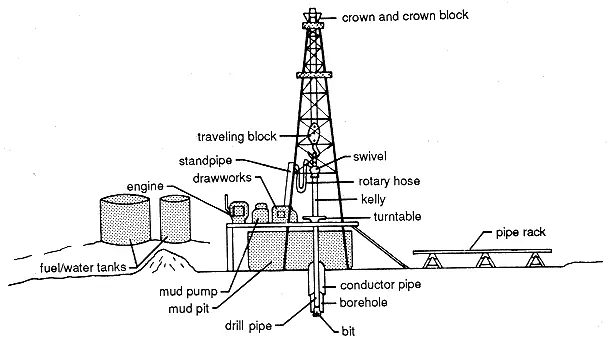
Maximizing Drilling Performance with PDC Bits
To fully harness the potential of API Polycrystalline Diamond Drill Bits in hard rock drilling, operators must employ strategies that optimize their performance. By understanding the unique characteristics of PDC technology and implementing best practices, drilling teams can significantly enhance efficiency and productivity.
Optimized Bit Design and Selection
The key to maximizing drilling performance begins with selecting the right PDC bit for the specific formation and drilling conditions. This involves a detailed analysis of the geological profile and consideration of factors such as:
- Rock hardness and abrasiveness
- Formation heterogeneity
- Expected drilling depth
- Hole size requirements
Advanced bit design software and simulation tools can help in customizing Api Polycrystalline Diamond Drill Bit PDC bits to match the exact formation characteristics. Features such as cutter size, placement, and back rake angle can be optimized to achieve the best balance between aggressiveness and durability.
Drilling Parameters Optimization
Once the appropriate PDC bit is selected, fine-tuning the drilling parameters is crucial for maximizing performance. This includes:
- Weight on Bit (WOB): Finding the optimal WOB ensures efficient cutting without overloading the cutters.
- Rotary Speed: Adjusting RPM to match formation characteristics can enhance ROP and bit life.
- Hydraulics: Proper flow rate and nozzle configuration are essential for effective cuttings removal and bit cooling.
Real-time monitoring and adjustment of these parameters based on downhole feedback can lead to significant improvements in drilling efficiency.
Advanced Drilling Techniques
Implementing advanced drilling techniques can further enhance the performance of PDC bits in hard rock formations:
- Managed Pressure Drilling (MPD): This technique can help maintain optimal bottom hole pressure, improving bit performance and reducing the risk of damage.
- Rotary Steerable Systems (RSS): When combined with PDC bits, RSS can provide precise directional control while maintaining high ROP in hard rock environments.
- Vibration Management: Employing tools and techniques to minimize harmful vibrations can extend bit life and improve overall drilling efficiency.
Continuous Improvement through Data Analysis
Leveraging drilling data for continuous improvement is a powerful strategy for maximizing PDC bit performance. This involves:
- Post-run bit analysis to understand wear patterns and optimize future bit designs
- Comprehensive well data analysis to refine drilling parameters for similar formations
- Collaboration between bit manufacturers and drilling teams to develop tailored solutions
By using these methods, drilling companies can get the most out of API Polycrystalline Diamond Drill Bits and reach levels of performance that have never been seen before in hard rock drilling situations. Not only is it more efficient, but it also saves a lot of money and makes it more likely that projects will succeed.
Conclusion
When it comes to hard rock drilling, API Polycrystalline Diamond Drill Bits have changed the game. Because of their cutting-edge technology, high resistance to wear, and unmatched cutting efficiency, they are the best choice for working with difficult rock forms. Understanding the science behind PDC technology, realizing how much cheaper it is than traditional bits, and putting in place methods to get the most out of it can help drilling companies do much better in their operations.
If you want to improve your drilling skills, Shaanxi Hainaisen Petroleum Technology Co., Ltd. has cutting edge API Polycrystalline Diamond Drill Bits that are made to meet the toughest hard rock drilling needs. Because we are committed to innovation and have a lot of experience designing and making bits, we can help you find solutions that make your drilling activities more productive and cost-effective.
Ready to experience the difference that cutting-edge PDC technology can make in your hard rock drilling projects? Contact our expert team today at postmaster@hnsdrillbit.com to discuss your specific needs and discover how our API Polycrystalline Diamond Drill Bits can transform your drilling performance.
References
1. Smith, J.A. et al. (2021). "Advancements in Polycrystalline Diamond Compact Bit Technology for Hard Rock Drilling." Journal of Petroleum Technology, 73(5), 62-70.
2. Johnson, R.B. (2020). "Comparative Analysis of PDC and Roller Cone Bit Performance in Hard Rock Formations." SPE Drilling & Completion, 35(2), 145-158.
3. Zhang, L. et al. (2022). "Thermal Stability Enhancements in Modern PDC Cutter Design for Extreme Drilling Environments." International Journal of Rock Mechanics and Mining Sciences, 150, 104982.
4. Brown, M.C. and Davis, K.L. (2019). "Optimizing Drilling Parameters for PDC Bits in Hard Rock Applications: A Case Study." SPE/IADC Drilling Conference and Exhibition, SPE-194129-MS.
5. Thompson, E.R. (2023). "Economic Impact of PDC Bit Technology in Hard Rock Oil and Gas Exploration." Energy Economics, 117, 106354.
6. Wilson, G.H. and Patel, A. (2021). "Advanced Simulation Techniques for PDC Bit Design in Heterogeneous Hard Rock Formations." Geothermics, 89, 101970.



